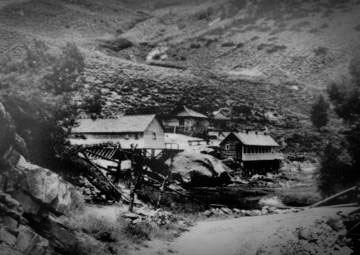
The very first inhabitants of Hot Sulphur Springs, Colorado, were Ute Indians who believed that the hot waters had healing qualities. The Utes did not have “chiefs” in the sense of the organized Plains Indians. There were five different tribal groupings in Colorado, and those in the Grand County area were known as the “White River Utes”. To this day, their  healing waters are considered one of the best natural hot mineral springs in the U.S..
healing waters are considered one of the best natural hot mineral springs in the U.S..
Most of the Rocky Mountains are very, very inhospitable. There is practically no way to grow enough food, graze enough livestock, or hunt enough wildlife to support much of a community, but the springs at Hot Sulphur could keep the tribes warm through the winter. They could set their hunting camps up in the bluffs around Byers Canyon.
It wasn’t until 1840 that William Byers came along and discovered the hot springs and put them on the map for the rest of America to seek out. The resort which currently sits atop the springs has been operating for 140 years.
In 1997, the Ute tribal spiritual leader blessed the waters at a grand opening ceremony which was attended by nearly 1,000 people. From that day to this, the Utes have been welcomed back to their healing home. However, the nearest current Ute reservation hugs the southern border of the state.
According to GoogleMaps.com, Latigo is 34.2 miles away from Hot Sulphur. When the Utes of Hot Sulphur wanted to hunt the high country, they walked our hills. One of our trails curls around a hill we call Paleo Point. With a sharp eye and some really good luck, we’ve found a few arrowheads out there. Photos courtesy of www.hotsulphurwprings.com.
Don't forget to check Latigo on Facebook, Pinterest, & Instagram!
<< Previous Post
>All Posts<